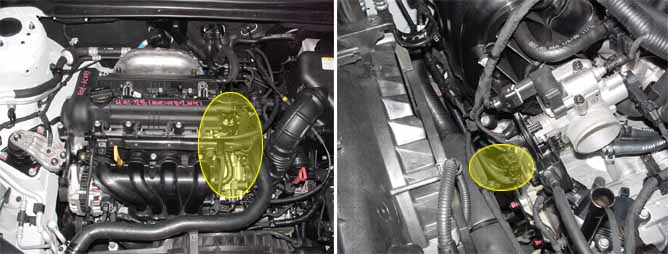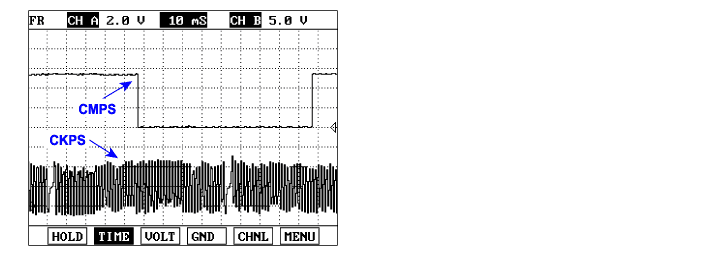

A Crankshaft Position Sensor (CKPS) is a magnetic type sensor that generates voltage using a sensor and a target wheel mounted on the crankshaft. The PCM calculates engine RPM by using the sensor’ s signal and controls the injection duration and the ignition timing.
Camshaft Position Sensor (CMPS) is a hall sensor and detects the camshaft position by using a hall element. It is related with Crankshaft Position Sensor (CKPS) and detects the piston position of the each cylinder which the CKPS can’t detect. This CMPS signal is sent to the PCM and it uses CMPS signals for determining the ignition timing with CKPS signals. CMPS makes Sequential Injection possible.
If the deviation between CKPS and CMPS is bigger than the threshold value, PCM sets DTC P0016.
Item | Detecting Condition | Possible Cause | |
DTC Strategy | ● Camshaft and crankshaft alignment check | ● Poor connection ● Contamination of Oil / Clog of Oil path ● CKPS, CMPS ● OCV ● CVVT | |
Enable Conditions | ● There is no electrical error on OCV. ● The target valve timing = Reference valve timing ● Time after engine start > 10~60s ● Coolant temperature : 60~110℃ ● Engine oil temperature : 60~110℃ ● Reference position adaption completed ● CVVT control condition activated | ||
Threshold Value | ● Average difference between Adapted reference position and currently measured position > 15˚CA, or < -15˚CA | ||
Diagnostic Time | ● 2.6 sec | ||
MIL ON Condition | ● DTC only | ||

This example shows a typical Crankshaft Position Sensor(CkPS) and Camshaft Position Sensor(CMPS) waveform at idle. The PCM controls the injection and ignition timing by using these signals. Generally CkPS signal is used to detect the piston’s position and CMPS signal is used to detect the Top Dead Center of each cylinder.